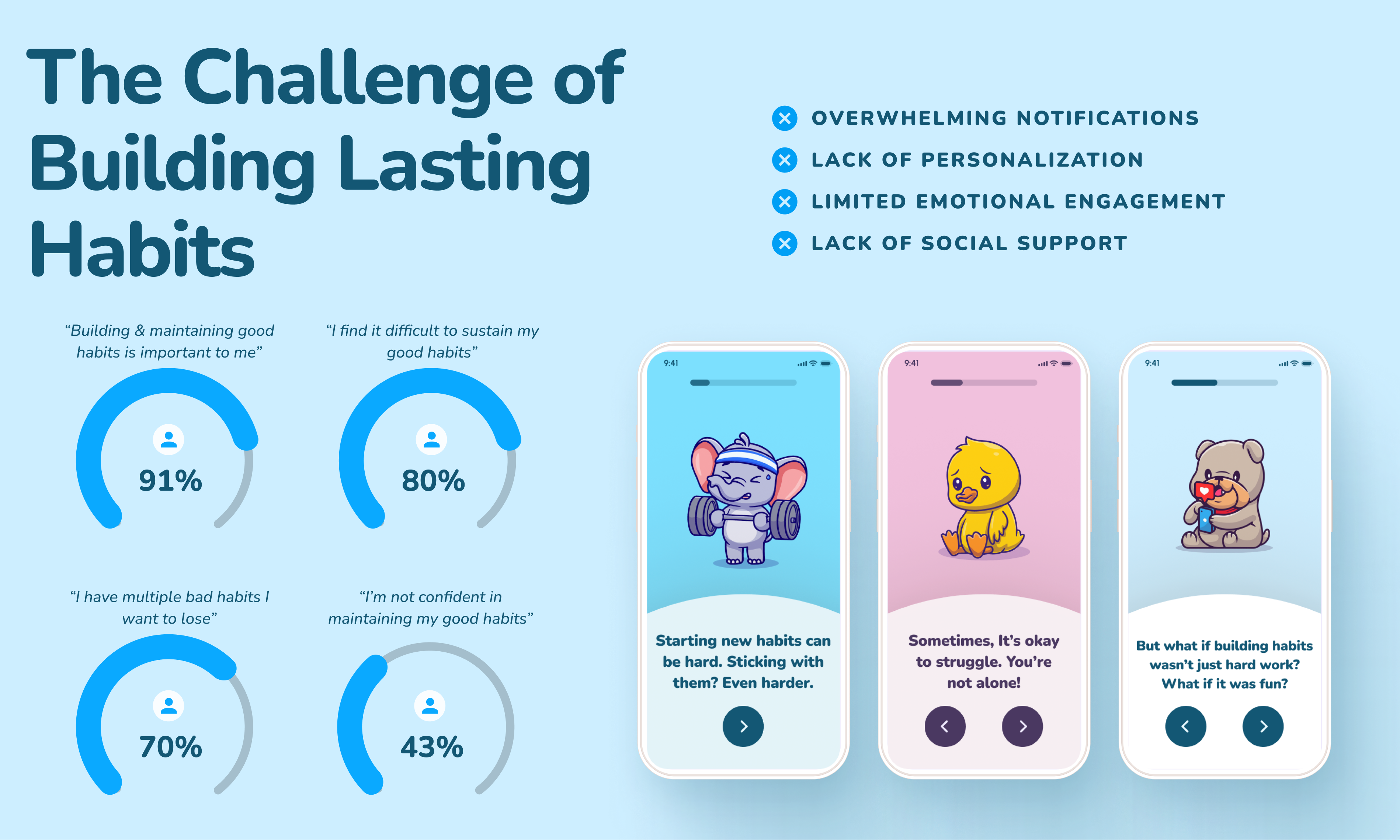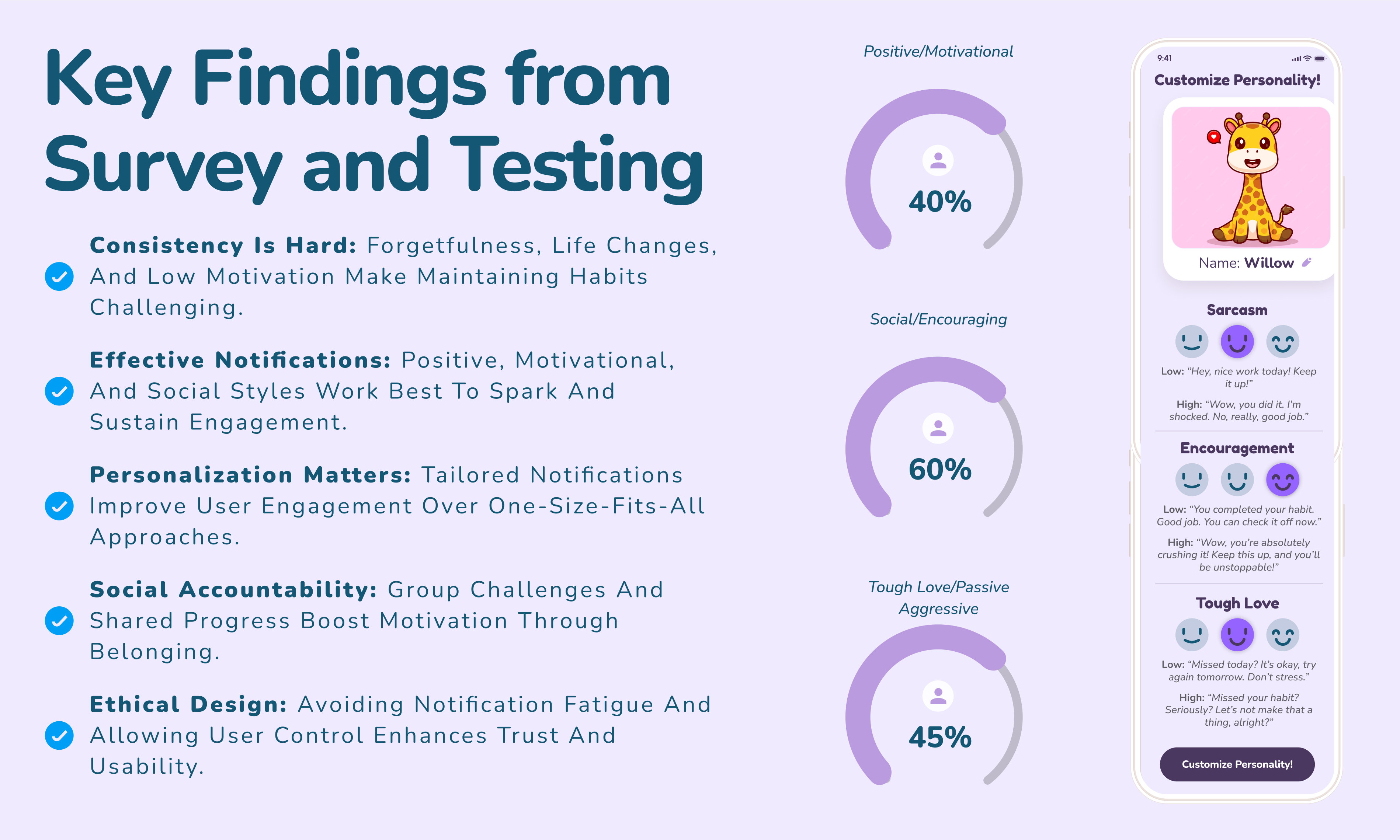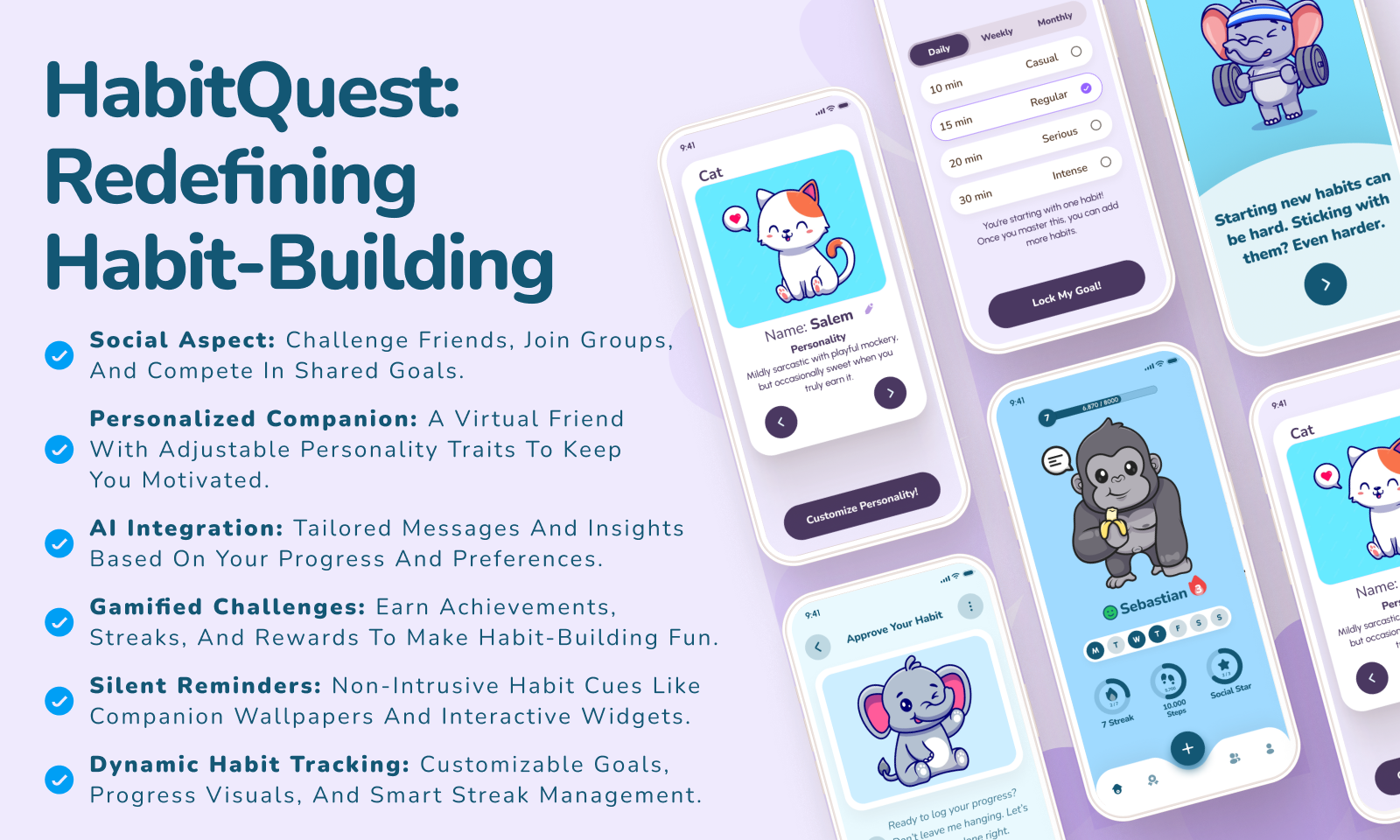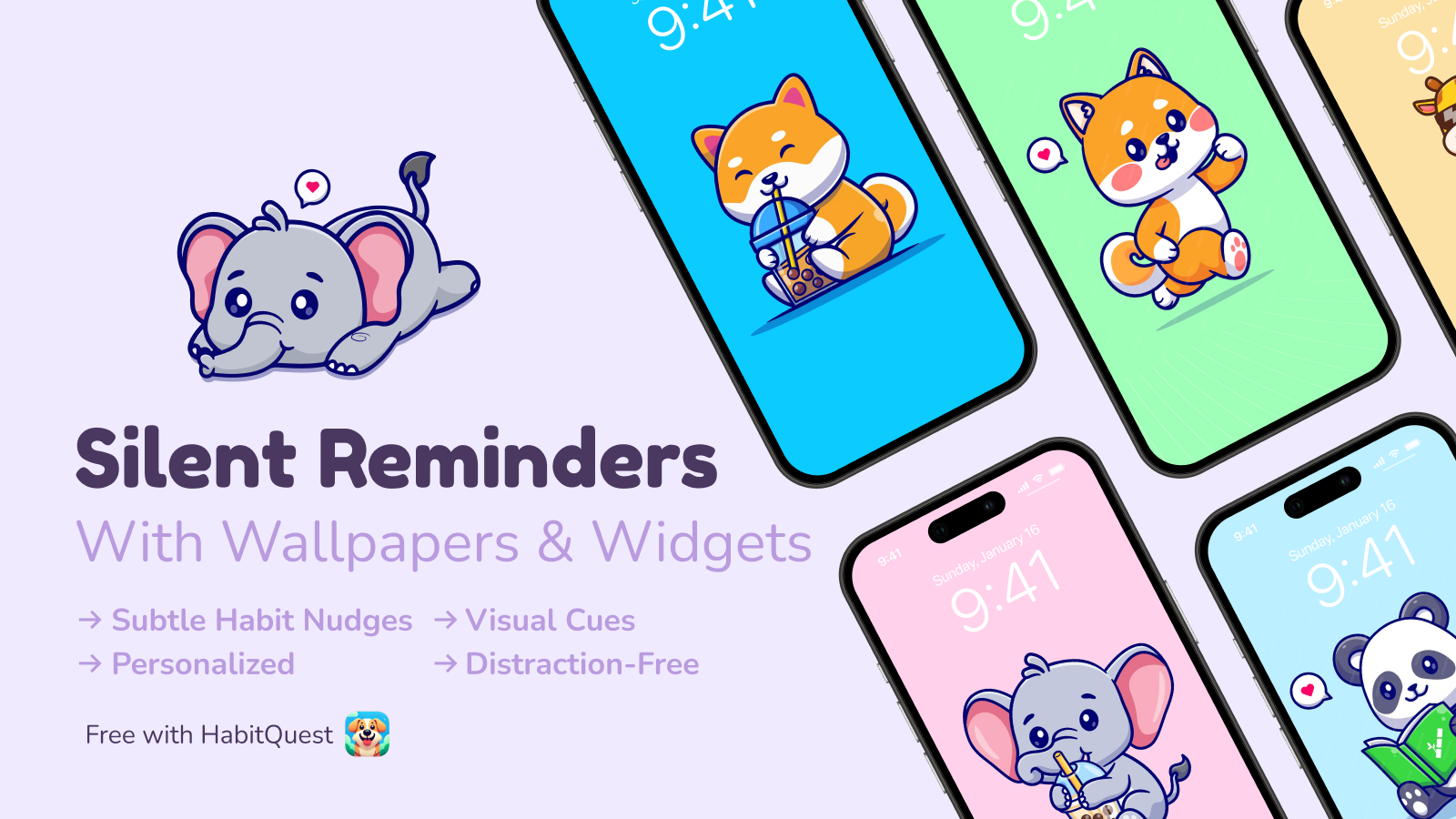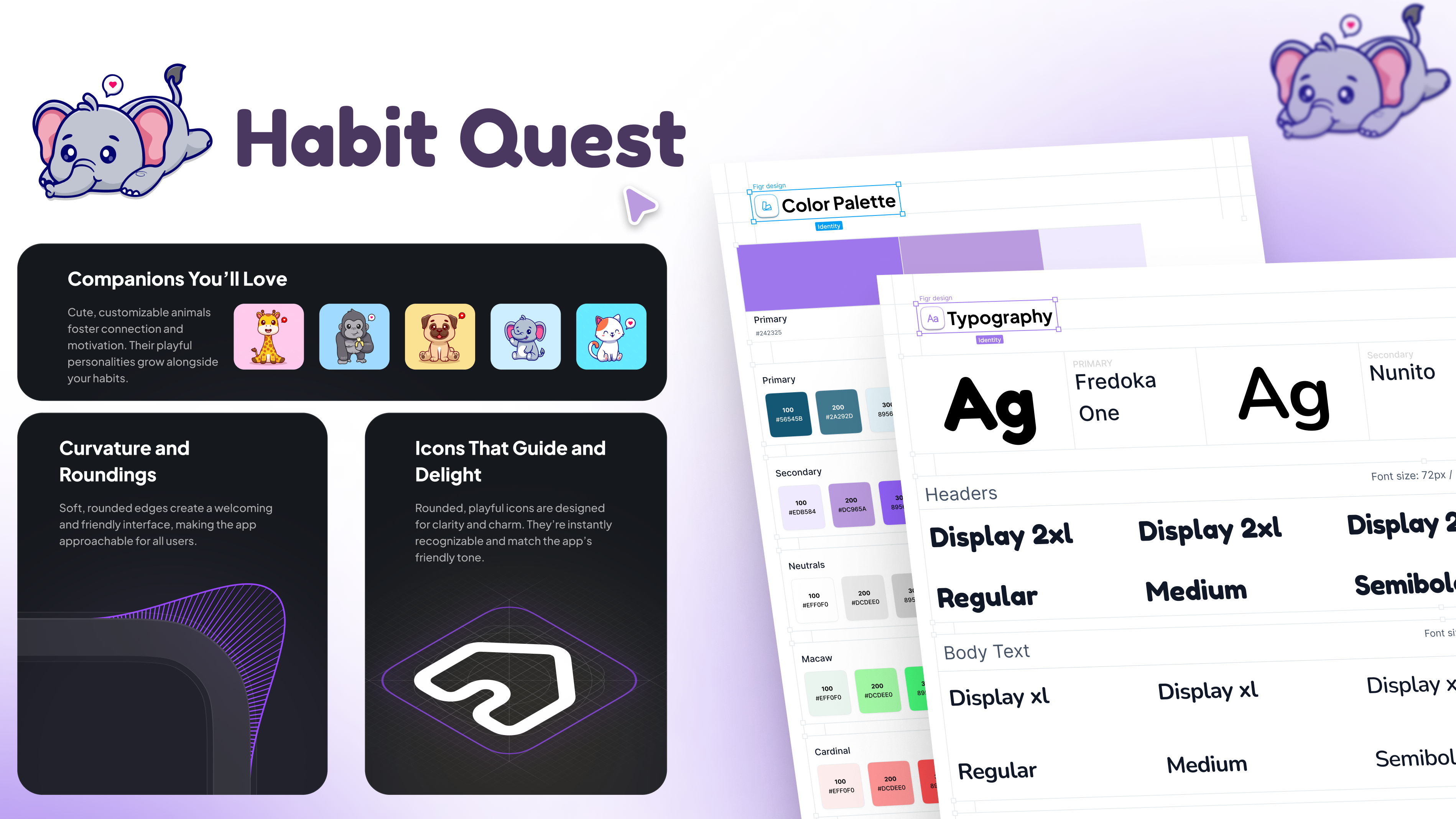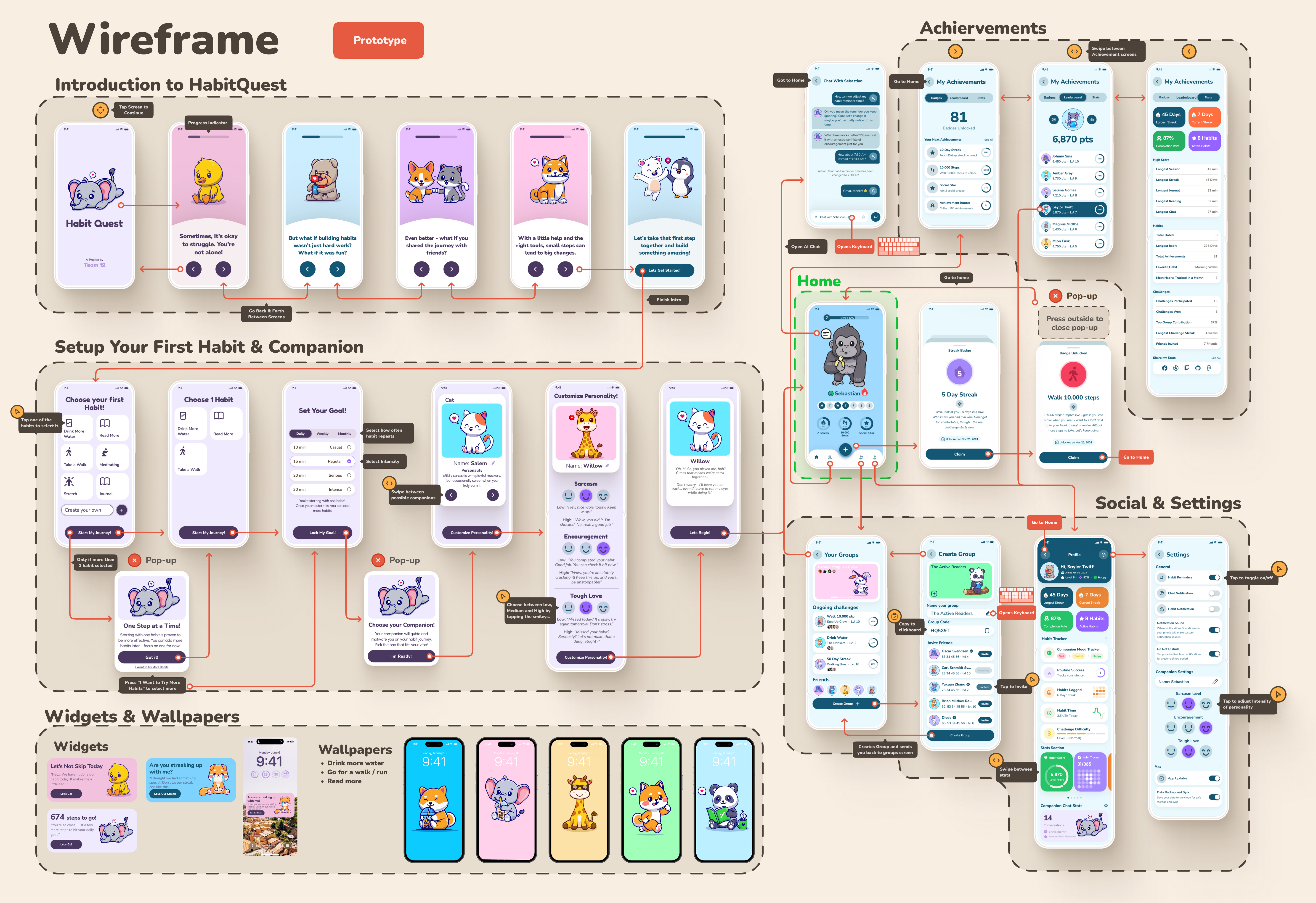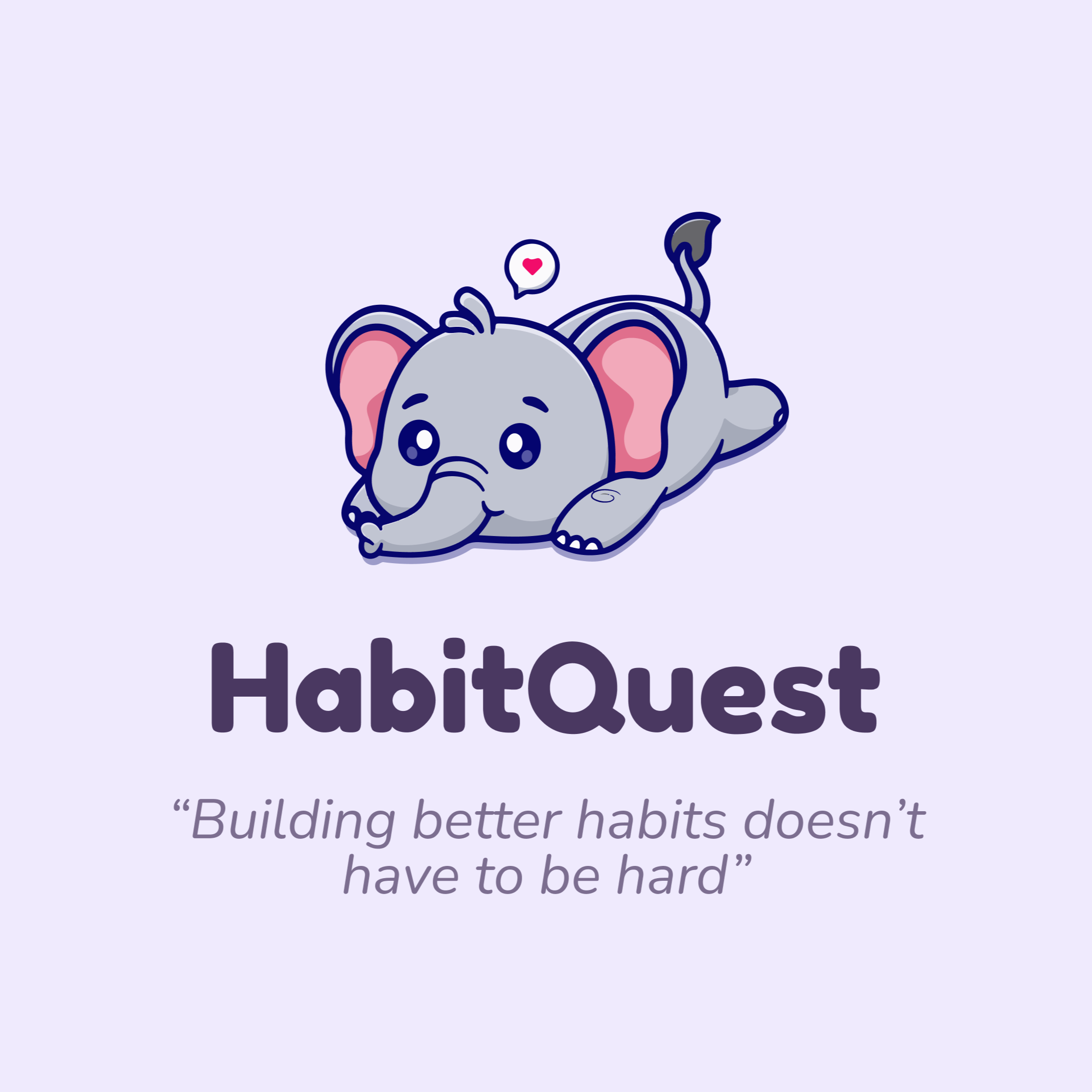
HabitQuest – Ethical Habit Design
HabitQuest explores how behavioral psychology and digital design can be reframed to support, rather than exploit, our attention. Developed as part of a project focused on micro-interventions, the app addresses the impact of screen addiction and dark patterns, common in social media, by repurposing those same mechanics to encourage healthy habit formation.
Through personalized virtual companions, gamified reinforcement, and social accountability, HabitQuest creates an environment where users are nudged toward consistency and self-reflection. Rather than avoid persuasive design, the project questions how it can be used ethically, applying reinforcement theory, nudge tactics, and social mechanics to foster autonomy, motivation, and long-term change.


